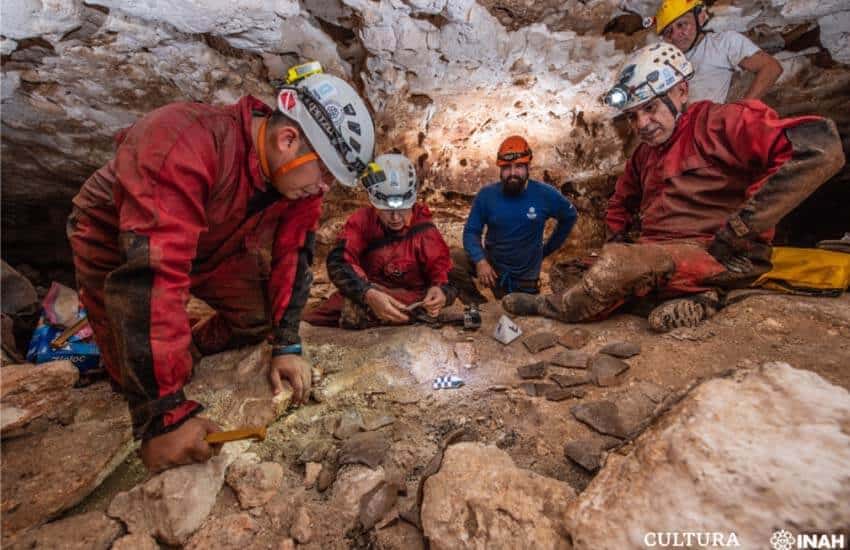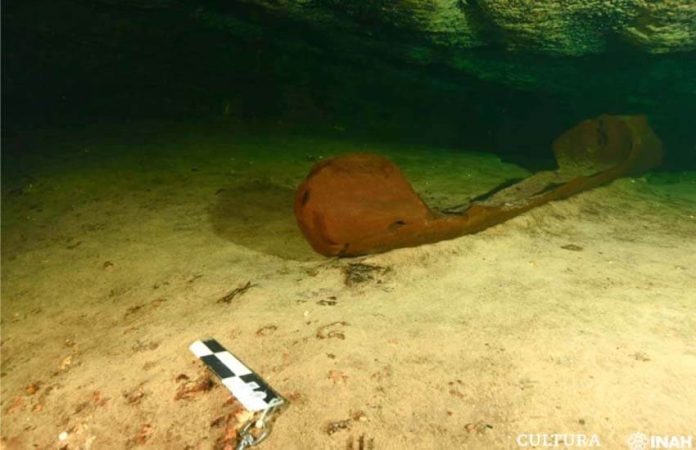Archaeologists working on the Maya Train railroad project discovered a pre-Hispanic canoe that is believed to be more than 1,000 years old, the National Institute of Anthropology and History (INAH) announced.
The Mayan wooden canoe was found in a cenote, or natural sinkhole, at the San Andrés archaeological site, located near the ancient Mayan city of Chichén Itzá in eastern Yucatán state.
Helena Barba Meinecke, head of the Yucatán office of the INAH Underwater Archaeology Department, said that she and other archaeologists were taking a break from diving when she noticed a dark mark on the cenote wall five meters below the surface of the water.
The mark was the opening to an underwater cave where the canoe was located. INAH said in a statement that it’s 1.6 meters long, 80 centimeters wide and 40 meters high.
“The small vessel could have been used to extract water from the cenote or to place offerings [in the cenote] during rituals,” it said.

Barba said it’s the first canoe of its kind to be found intact and so well preserved in the Mayan region. Fragments of pre-Hispanic Mayan canoes have previously been found in Quintana Roo, Guatemala and Belize, she said.
The archaeologist said the canoe was likely built in the Terminal Classic period, which corresponds to 830-950 AD. If that hypothesis is correct, the canoe is at least 1,070 years old.
The canoe will be subjected to a dendrochronology, or tree-ring dating, analysis next month to determine its age and the type of wood it is made of. Experts from the Sorbonne University in Paris, France, will aid the analysis, INAH said.
A three-dimensional model of the canoe will be made to assist additional study and allow the construction of replicas that could be exhibited in museums, the institute said.
Other objects of archaeological value were found in and around two other bodies of water on the San Andrés site.
Archaeologists found a “human and ceramic skeleton,” a ritual knife, an incense burner, more than 40 broken pots and fragments of charcoal. They also discovered pre-Hispanic artwork, including a mural made with painted hands.
“It’s clear that this is an area where ceremonies took place,” Barba said. “Not just because of the intentionally broken ceramics but also because of the charcoal remains that indicate [the Mayan people’s] exposure to fire.”
Mexico News Daily
